Push Back Racking Systems redefine storage efficiency and are tailored for high-density, multi-product stocking. These systems shine by marrying exceptional selectivity with virtually maintenance-free operations, particularly in configurations that include the second pallet. At their core, nesting carriages allow for the deep storage of up to five pallets in a single movement. This design facilitates impressively high pick-flows from every lane entrance along the work aisle, streamlining access and operations in a pushback pallet-racking environment.
The operation is seamless: each new pallet loaded onto the carriage is gently pushed back into the lane by adding subsequent pallets. During unloading, gravity naturally advances the pallets to the aisle via telescopic carriages, eliminating the need for reaching into the rack or maneuvering equipment within its confines.
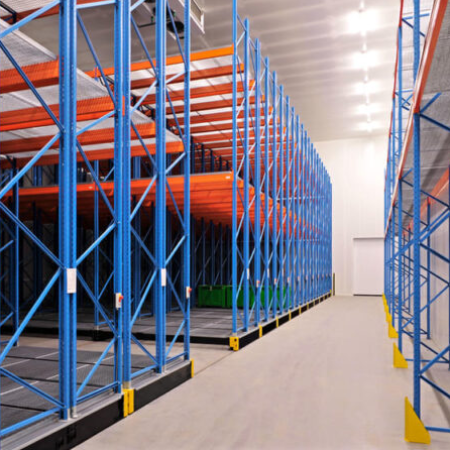
Pushback racking is a high-density storage solution where 2 to 6 deep pallets are loaded on inclined rails or track sets, with each pallet resting on the rails. Previous pallets are pushed back as new pallets are loaded, and pallets move forward upon unloading, ensuring efficient inventory management.
It works in the LIFO stock management system. That means the last item stored will be the first one to be removed. It makes the racking suitable for businesses with less product rotation and higher storage capacity needs, such as distribution centers, cold storage, and food and beverage, utilizing the interlake pushback pallet rack starter. You can also facilitate batch storage for higher efficiency.
The forklift does not enter the racking, making it risk-free and less likely to collide with the rack structure. It protects the structural integrity and prevents product damage in the storage system allowing for efficient inventory management.
The key advantages of push-back rack systems include maximizing spaces by reducing the number of aisles required, maintenance-free use, durability, safety for the product, and the ability to store pallets 4 deep. It also offers easy loading and unloading to save time and reduce the workforce cost.
Gravity makes the pallets glide forward naturally so that you can access the next pallets easily, making the operation hassle-free.
Push-back pallet racking suits businesses with high-volume, non-sequential pallet storage requirements. They will get optimized space, streamline operations, and quick access to stored goods.
A push back racking system utilizes the vertical space to store more inventory compared to traditional storage systems, allowing for better SKU management and enabling pallets to be stored more efficiently. It also ensures heavy load capacity with its strong structure and materials, making it ideal for a used interlake pushback pallet rack.
The rack system creates a grid-like pattern with steel frames, beams, bolts, and shelves.
The foundation of the push-back system is made of high-strength steel to hold the weight of the entire goods. These steel frames form the vertical and horizontal supports for the racks. The frames are welded or bolted to create the structure for racks, ensuring stability for the pushback pallet system.
Frames are connected by horizontal beams and vertical uprights for additional support in the drive-in rack. Beams are also adjustable to adjust the height.
3-4 degrees inclined rails run along the storage bay, allowing for efficient loading and unloading of pallets resting on the rails. They allow nested carts to roll forward smoothly. These steel-made nested carts are the most distinctive features of the push-back racking system. The carts have wheels to glide along the rails, making them easy to load and retrieve, especially when using a pushback pallet rack adder system. At the end of the rails, stop plates prevent the carts from rolling off the rails.
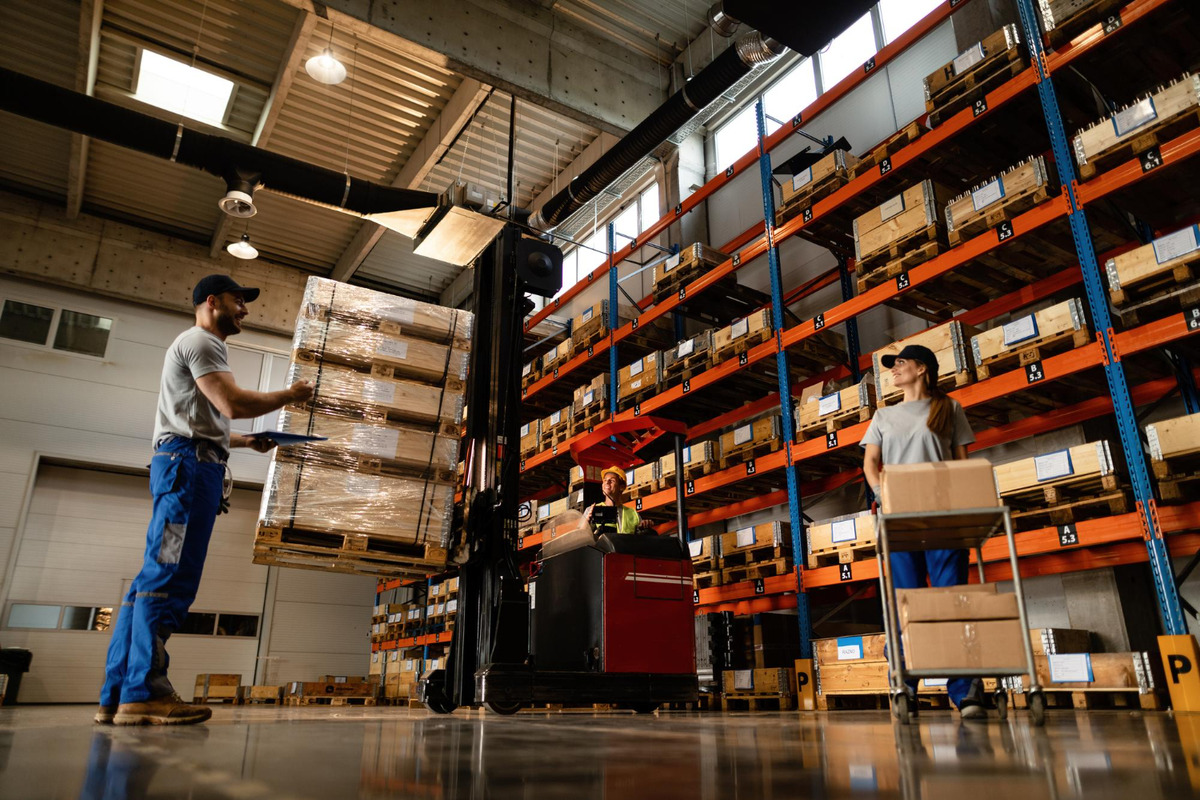

A standard push-back racking will be 12 to 30 feet high, depending on the need. The aisle width will be 10 to 12 feet. Each standard pallet will be around 48 inches in width. The system has 2 to 6 pallets deep per level in general.
The functional process of push-back pallet racking systems
Push back pallet racks function in three steps – loading, storage, and retrieval.
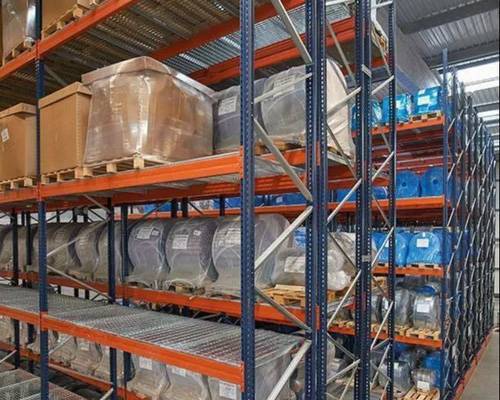
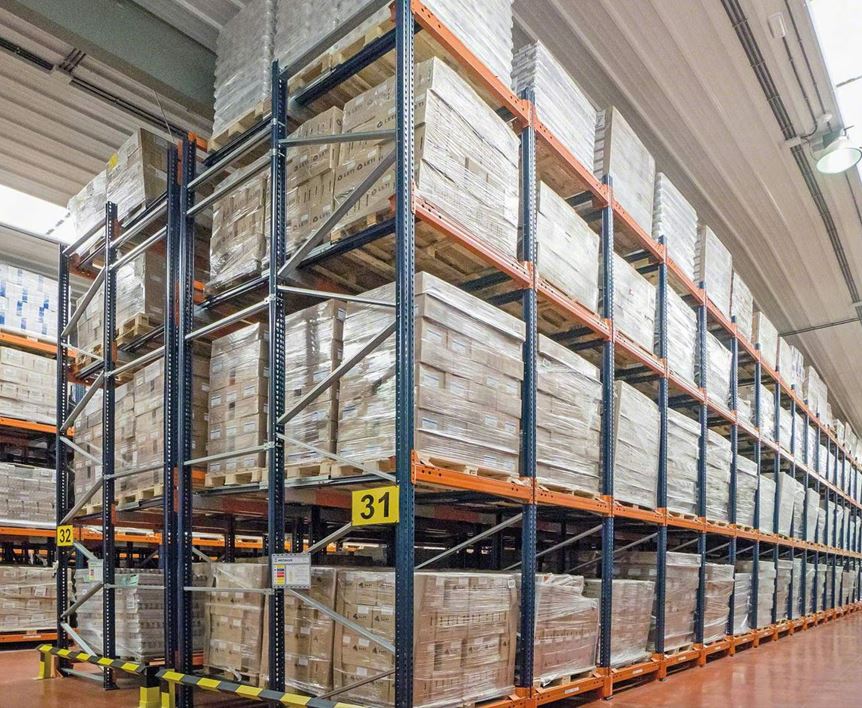
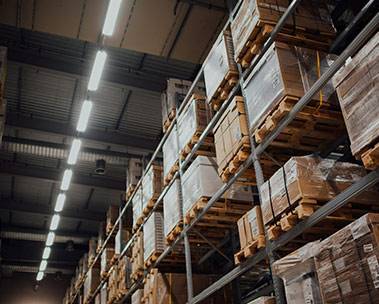

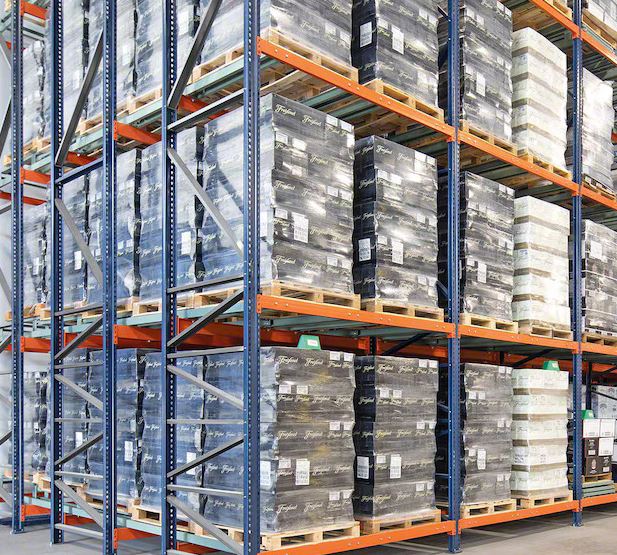
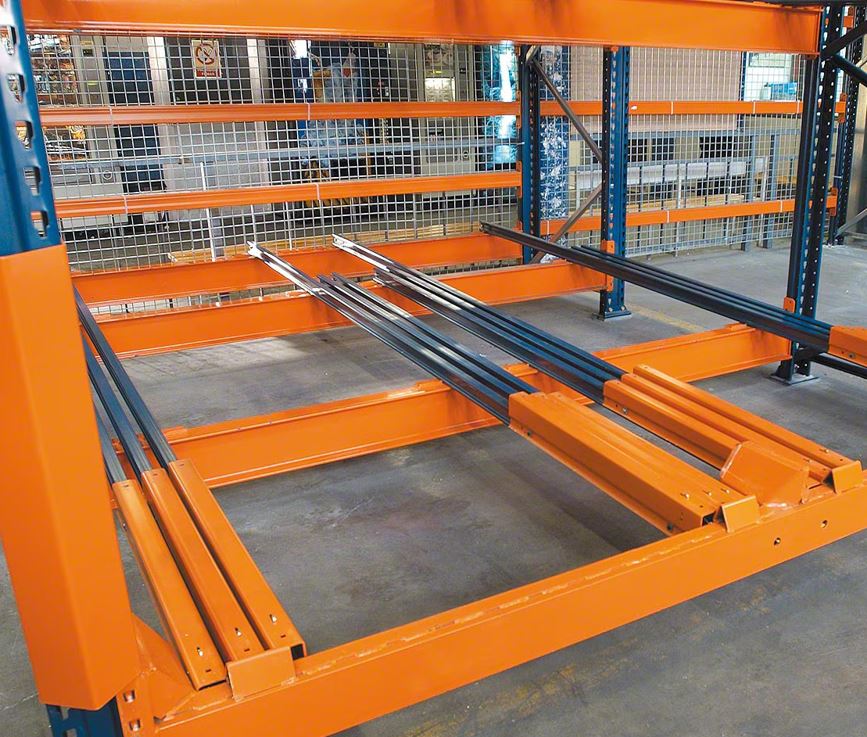
Specially designed for cleanliness and minimal debris accumulation, the structural part of the Push Back Racking System is particularly suitable for food-related applications. Flexibility in configuration is given, with multiple accessory options and layouts available to cater to specific warehouse capacities, inventory types, and sizes, pallet models, and dimensions, as well as to adapt seamlessly to the customer’s existing operational systems.
Push Back Racks stand out for their adaptability and storage capabilities, making them a go-to solution for businesses embracing any model, from multi-channel to omnichannel approaches and beyond.
Since it is a last-in-first-out (LIFO) system, perishable products are unsuitable for this storage.
Using mixed SKUs will make the system inefficient since storing SKUs with different sizes will leave some empty spaces.
The cost of installing the push-back racking is relatively higher than that of other racking systems.
Push back racking costs $100-$200 per pallet. However, the cost varies with the rack density and height. To ensure you get an accurate quote please contact us. Or Visit our office, get directions to Reach Matco Distributor from Google Map.
The weight limit for push back racking is 2000-3000 lbs, which is ideal for a drive-in rack system. But you increase or decrease the limit with the pushback rack system design.
In pallet racking systems, a "push back rack" allows pallets to be loaded from the front and stored on inclined rails that push the previous pallet back as new ones are loaded. When a pallet is removed, the next one moves forward into the picking position. This system maximizes storage space and offers an efficient method for managing high-density inventory, particularly in warehouse environments where stock rotation (FIFO or LIFO) is essential.
Matco offers Selective Pallet Rack, Drive-in Pallet Racking, Pallet Flow Rack for your warehouse storage solution.
Trustindex verifies that the original source of the review is Google. I used Matco for bin shelving and some pallet racking for our repair shop and was extremely happy with the quality of the products and the communication from the team !Posted onTrustindex verifies that the original source of the review is Google. Highly recommend for any warehouse solutions and pallet rackingPosted onTrustindex verifies that the original source of the review is Google. Matco’s knowledgeable representatives took the time to walk us through their product offerings, ensuring that we had exactly what we needed to optimize our warehouse operations. Thanks to their guidance and high-quality supplies we have seen a noticeable improvement in productivity and safety! Highly recommendPosted onTrustindex verifies that the original source of the review is Google. Great products and great customer service! Highly recommend doing business with them.Posted onTrustindex verifies that the original source of the review is Google. Used them for my uncles warehouse to set up pallet racking. Jim and Nick were great!Posted onTrustindex verifies that the original source of the review is Google. I used Matco for pallet racking, were extremely informative and suggestive based of my wants and needs thanks Nick!Posted onTrustindex verifies that the original source of the review is Google. Great Service. Great Staff. I needed Pallet Racking and they were able to help me with the best prices around. Good quality and great customer service. Thank you Matco DistributorsPosted onTrustindex verifies that the original source of the review is Google. Awesome people that work there. The really know how to get the job done right. Great place to deliver to.Posted onTrustindex verifies that the original source of the review is Google. Great service. Friendly staff. In and out quickly, and best price by far in town. Would highly recommend!!